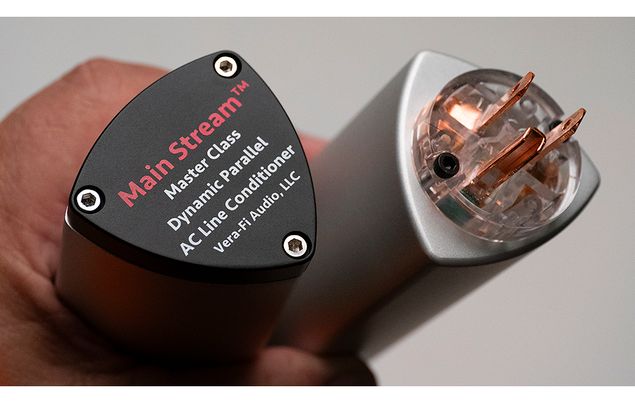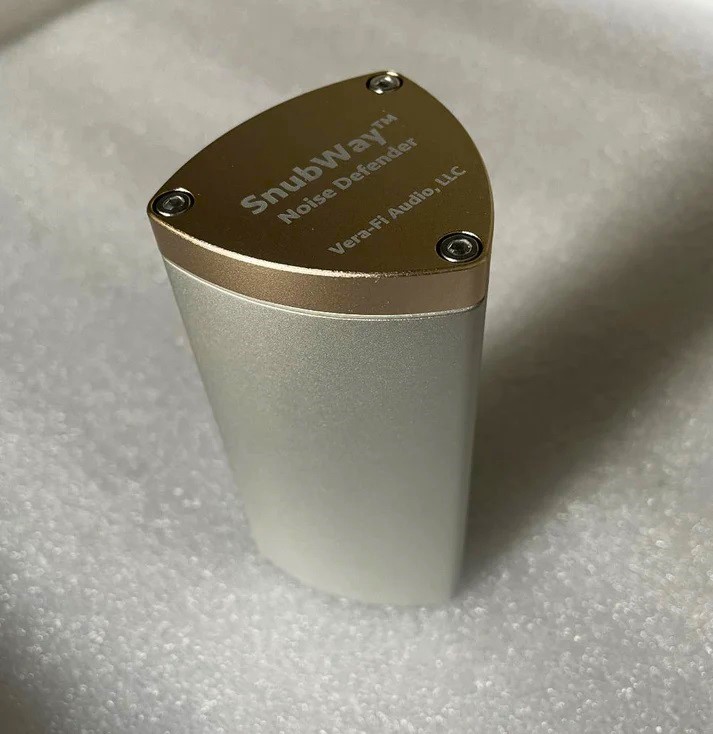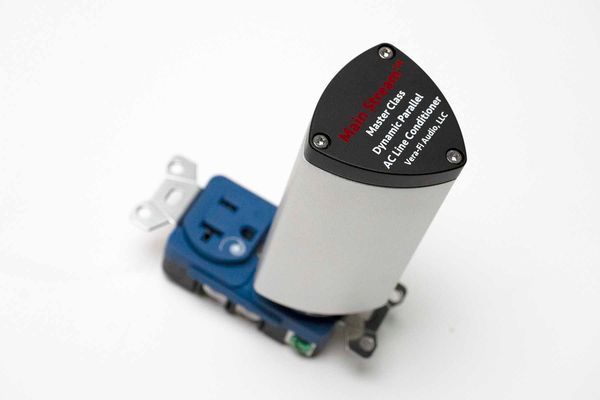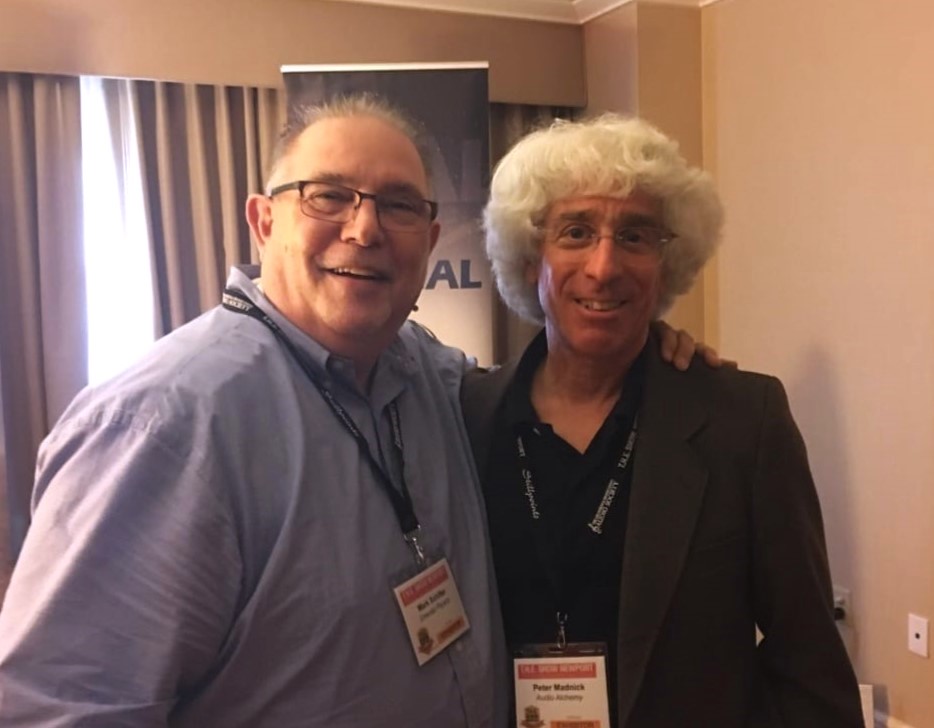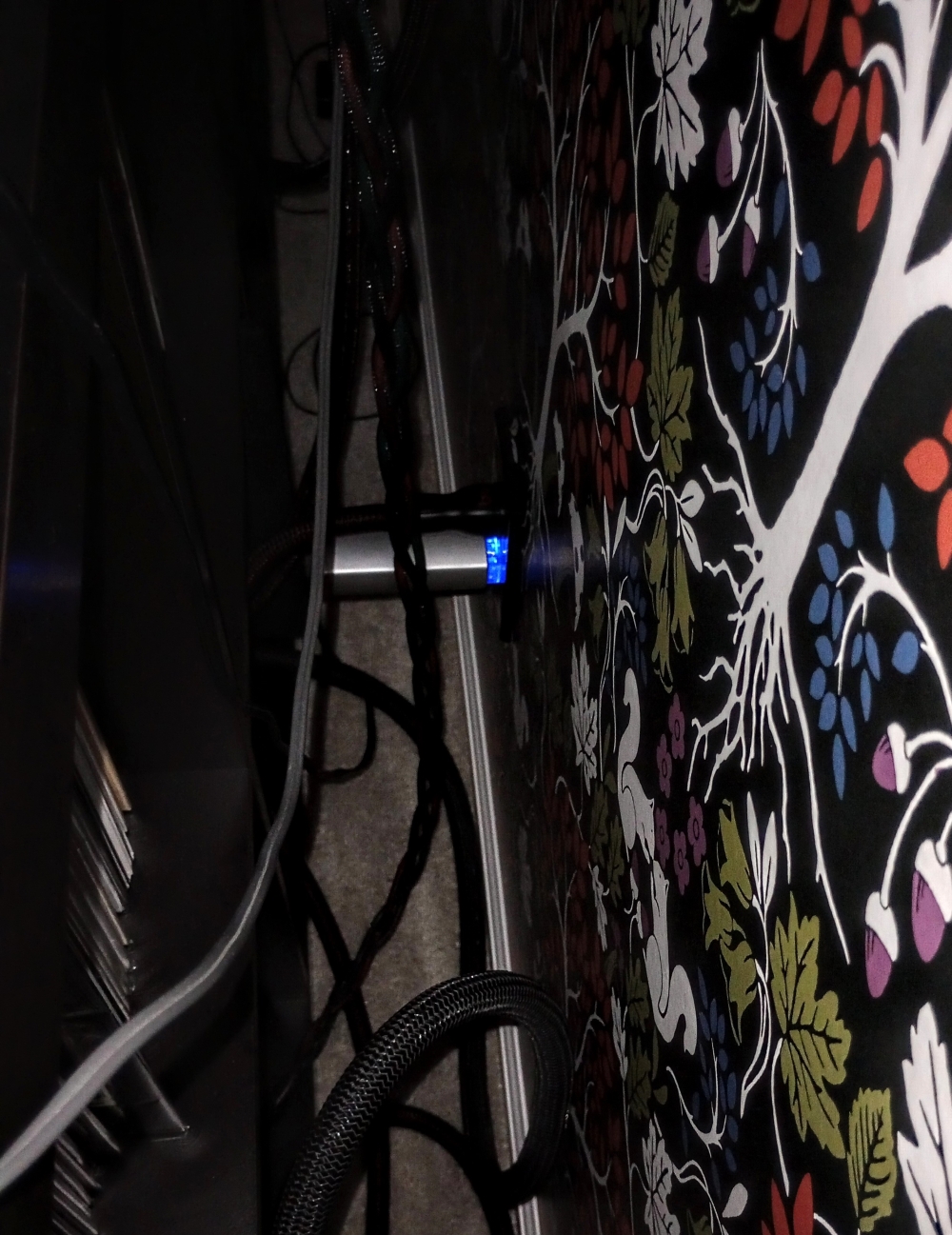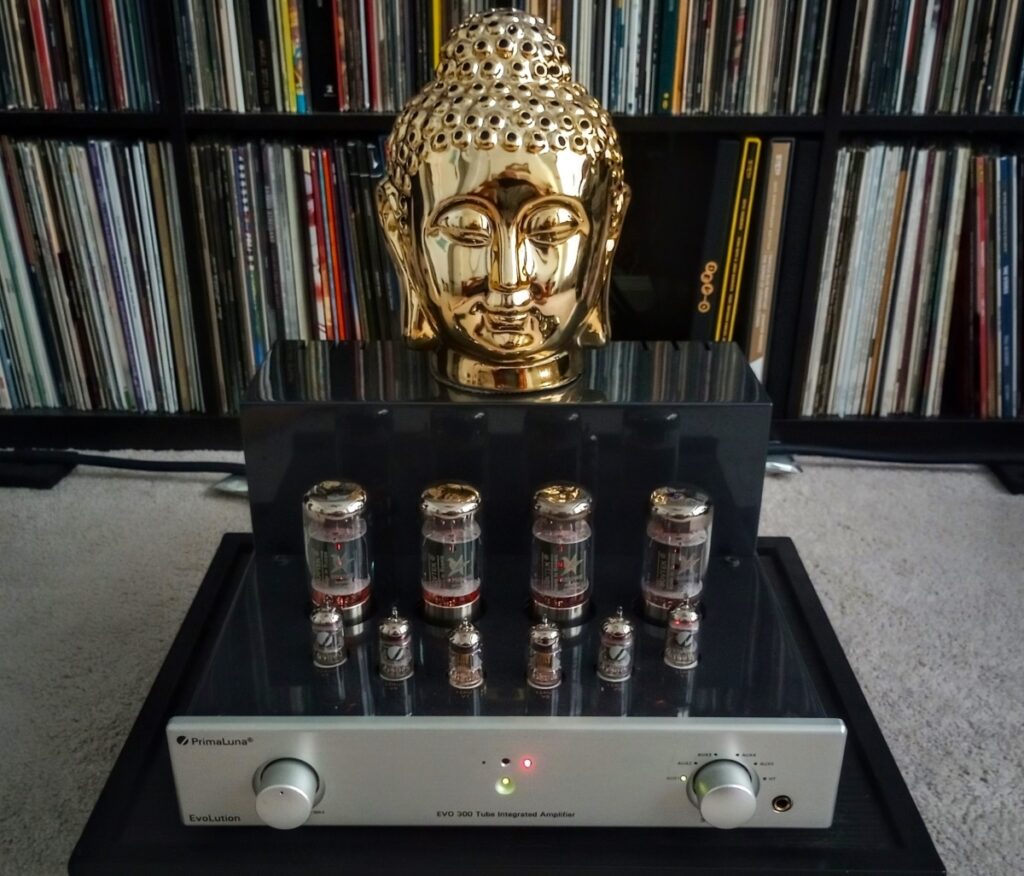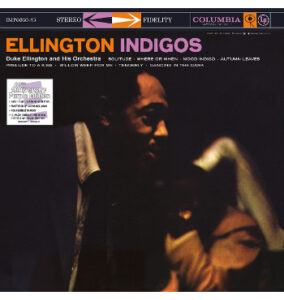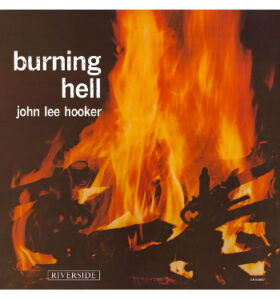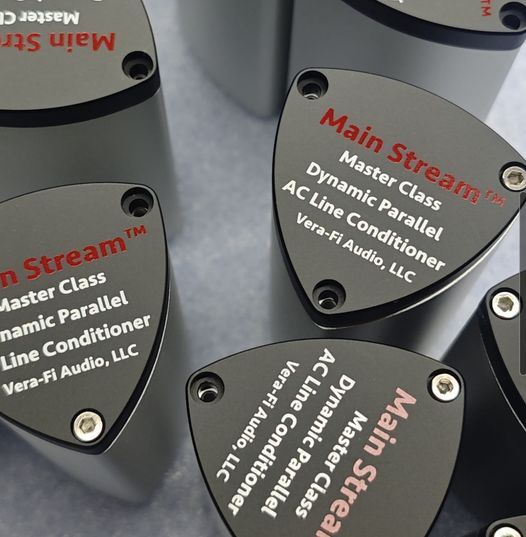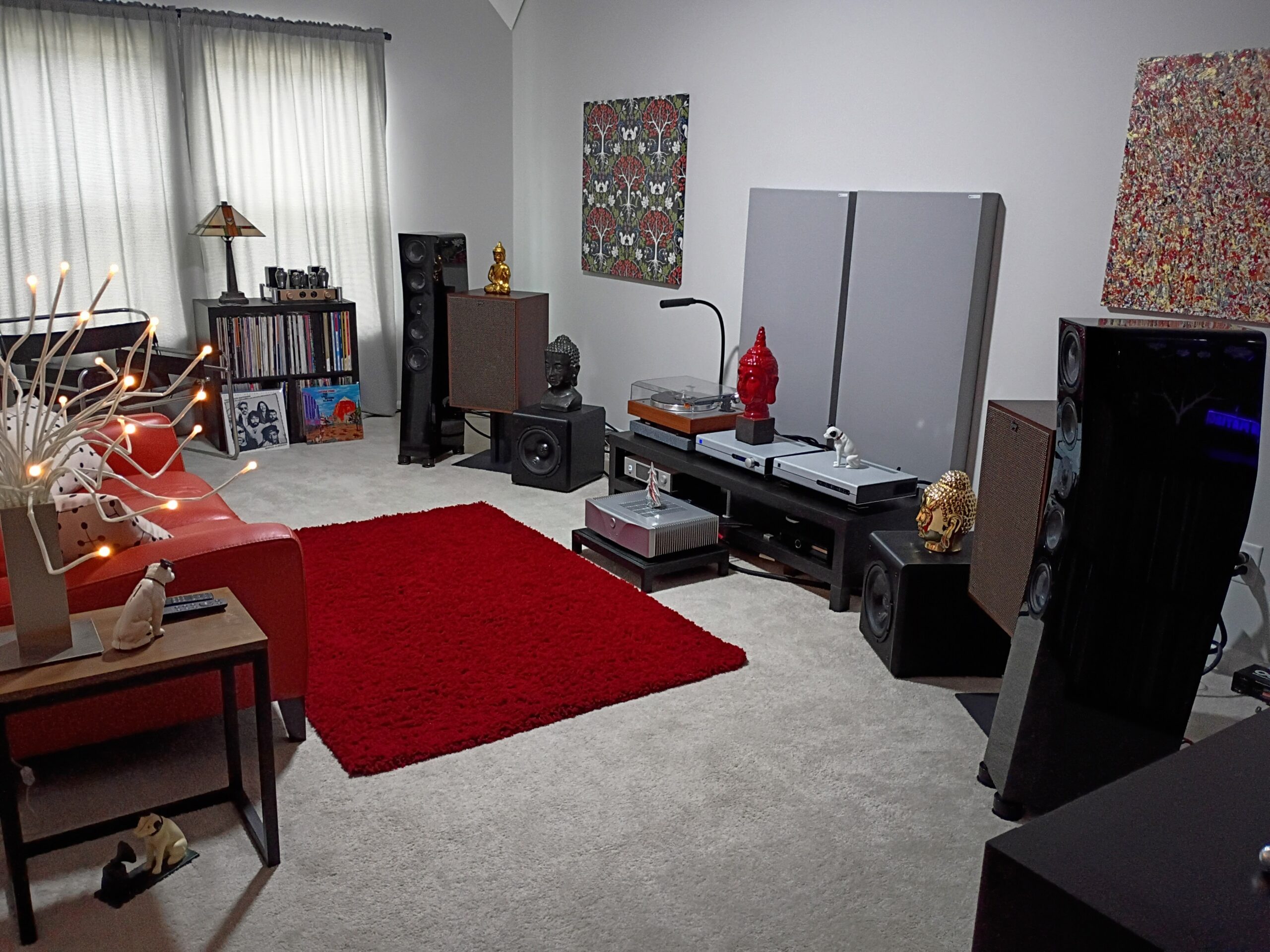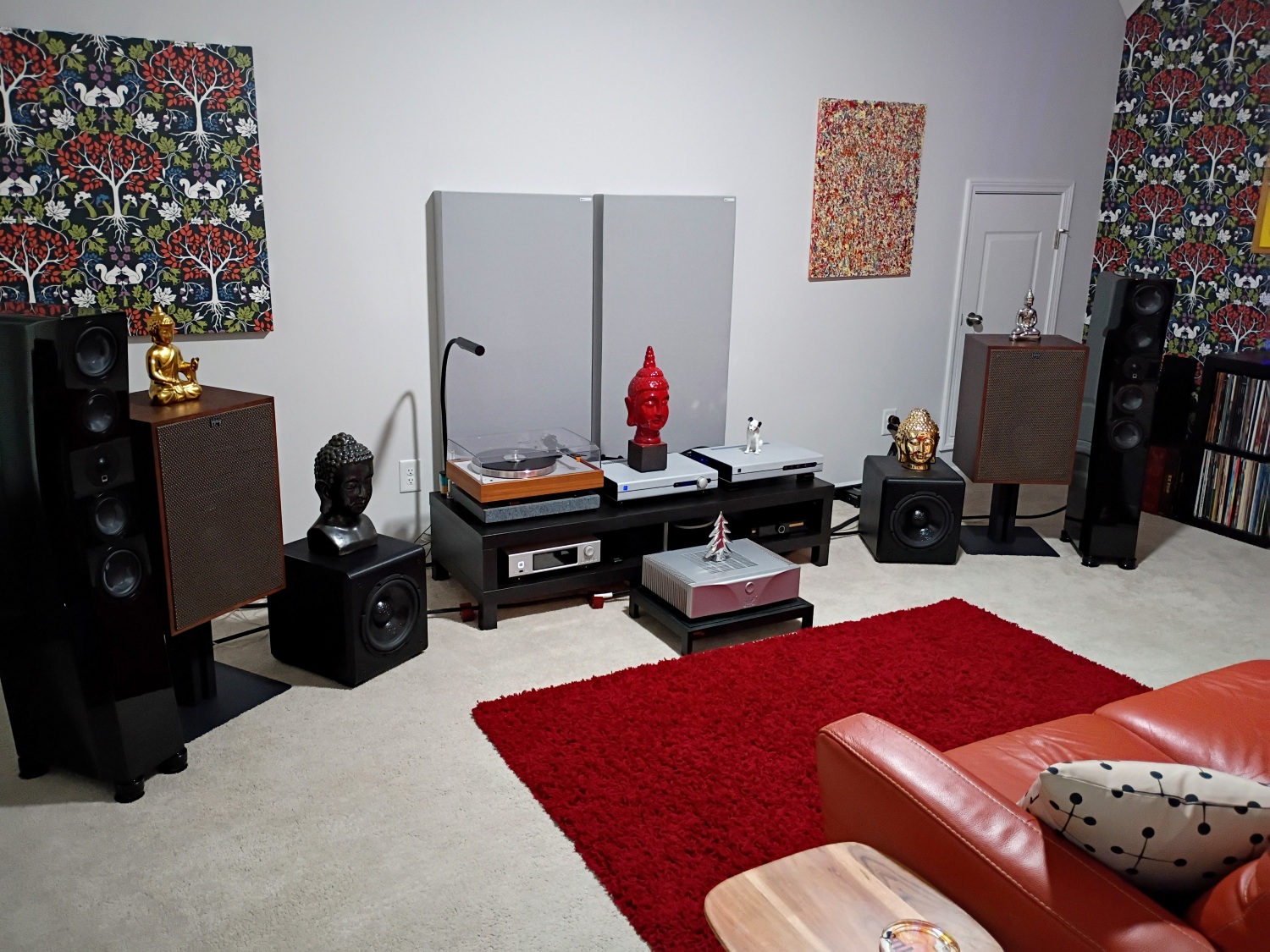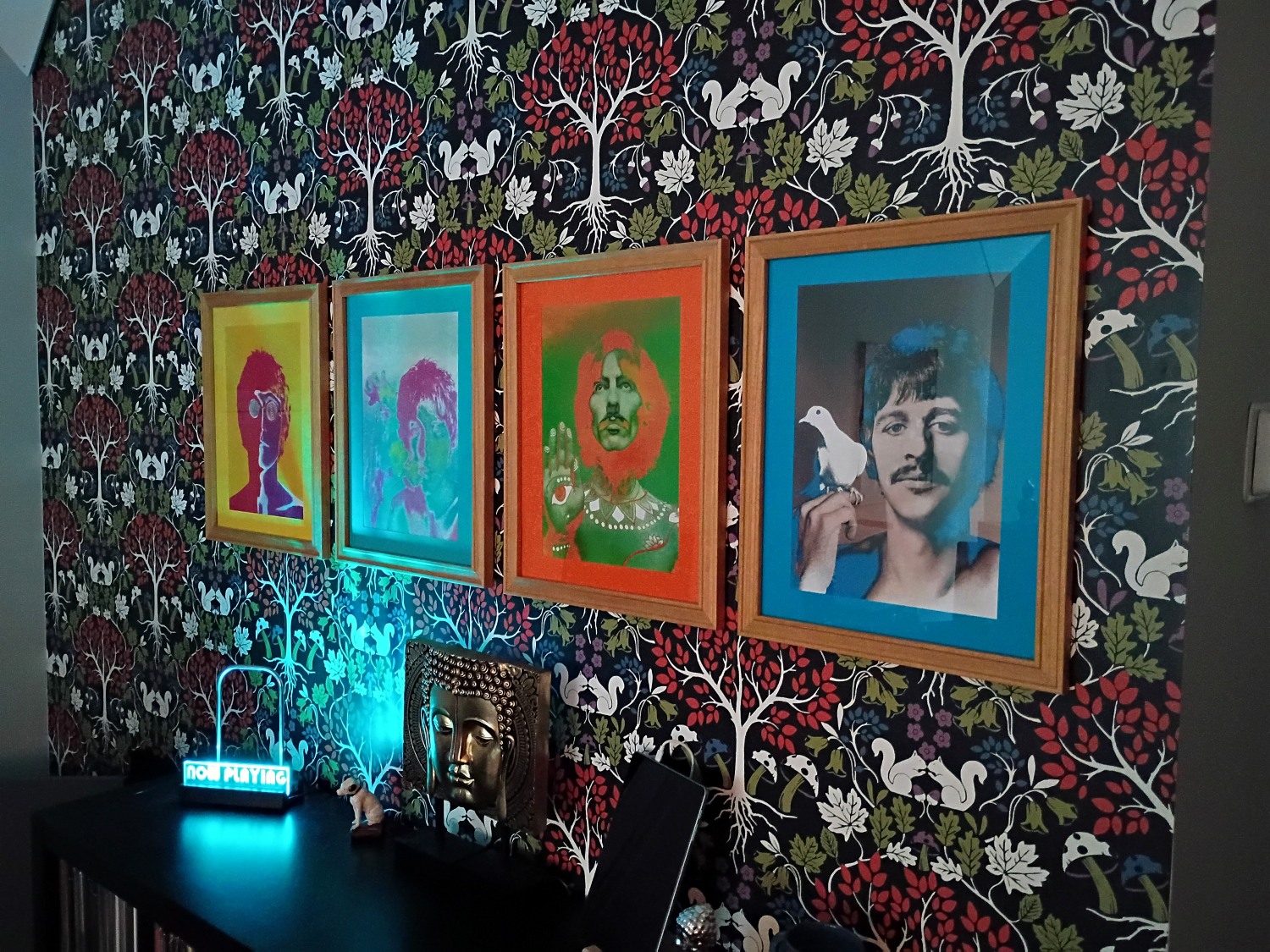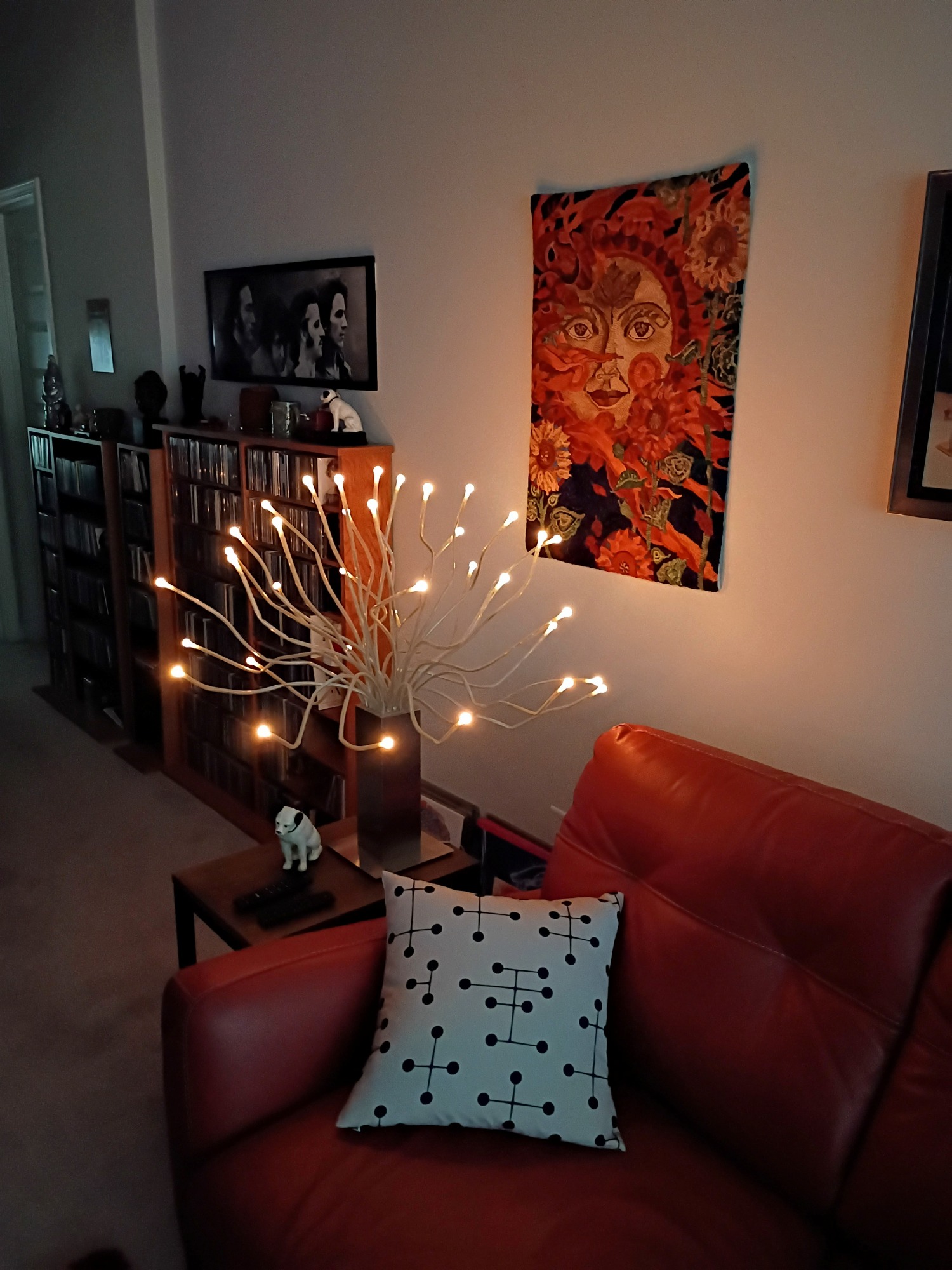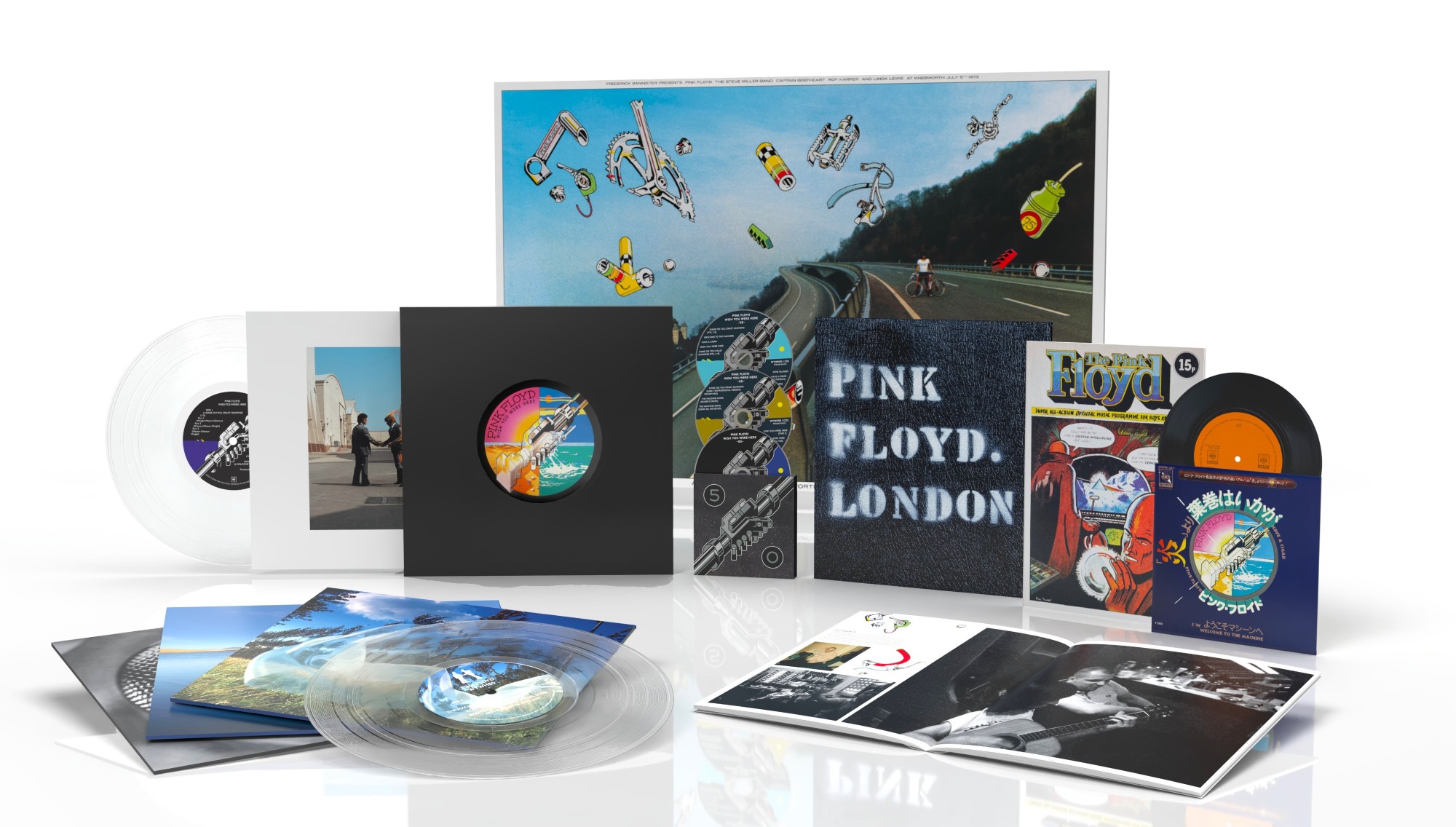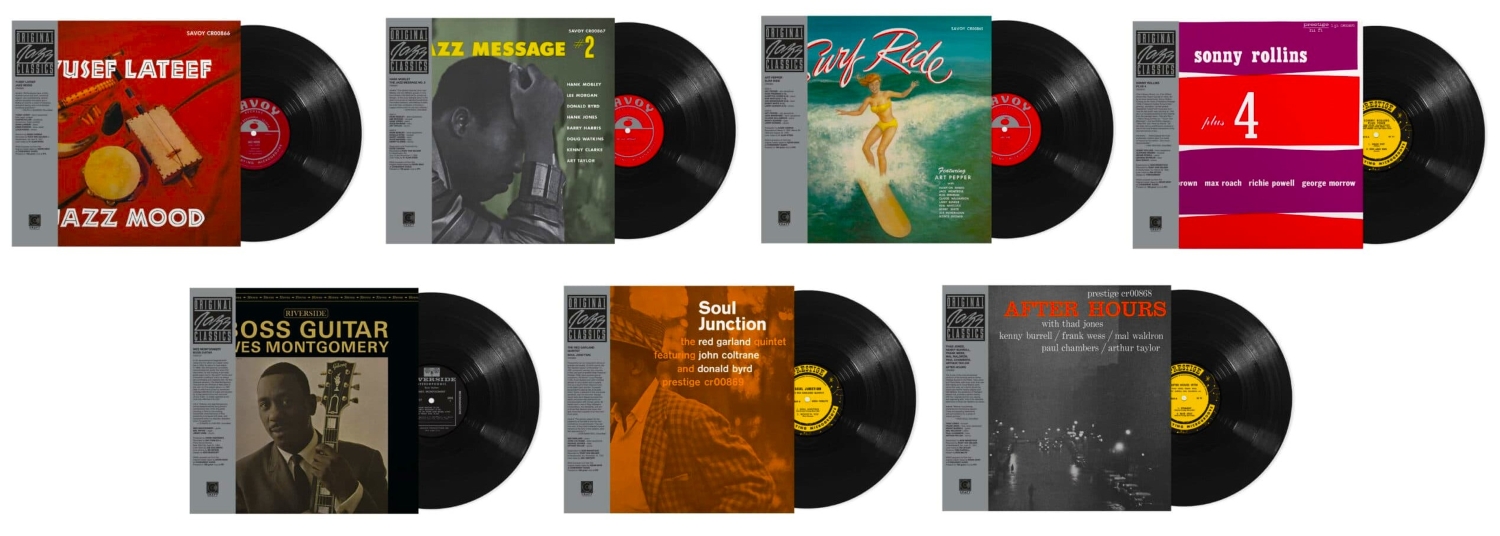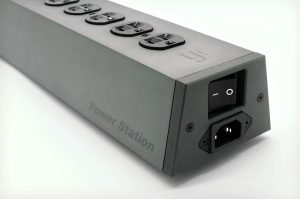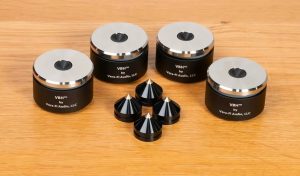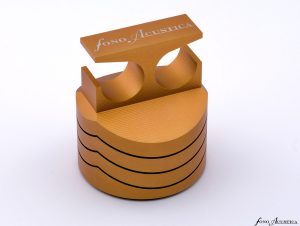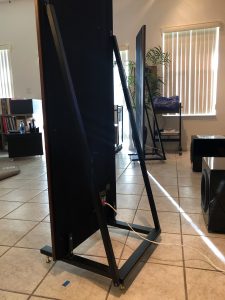Early this year, Vera-Fi Audio main-man Mark Schifter messaged me to gauge my interest in a new product line he was then representing from Thai manufacturer Puron. I'd told Mark that even though I had a pair of AudioQuest Niagara Low Z, AC power conditioning units in place at the new home in South Carolina, I was still experiencing a greater level of mains-related noise now versus my setup in Georgia. He offered a pair of Puron AC Power Conditioners for evaluation; the Puron ACs are small, cylindrical devices that plug directly into an available system outlet, and they provide a broad spectrum of AC mains noise filtering. In tandem with the Niagaras, the Puron ACs significantly reduced the level of noise I was hearing in both my analog and digital systems. I even tried one in combination with my large screen 4k UHD TV, where the Puron AC improved levels of sharpness, realism, and color rendering, helping the image of an already good TV look almost 3D! I was seriously impressed with how they were able to instantly improve any system they were inserted into, and I gave the Puron my highest rating; you can read my full review HERE.
Despite Mark's enthusiasm for the Puron AC, he'd been dropping hints that he and his partner Viet Nguyen were already involved in the development of a new series of designed "from-the-ground-up" AC power conditioners. That would match the kind of improvements shown by the Puron AC devices, but would also employ specialized filters that were specifically tailored to address more troublesome aspects of AC mains noise. And that wouldn't just be a "one size fits all" type device along the lines of the Puron AC, but would provide an elevated level of noise filtering; as Mark so eloquently described them for me, "They'll be like the Purons on steroids!" The first of those new devices, the SnubWay™ Noise Defender, arrived in April; you can read my full review HERE. SnubWay is an advanced parallel mains noise filter; its multiple discrete LRC filters are tuned to absorb AC mains noise in the 10kHz to 2MHz frequency range created by switch mode power supplies and other sources. That said, SnubWay's greatest range of effectiveness is in the problematic 400kHz-600kHz range; that's the spectrum where most of the noise it's designed to eliminate resides. In other words, it clears, or "snubs" the AC line noise that affects the highest frequencies of your audio system. Where very little music, but a great deal of noise can be found. SnubWay is intended to be plugged into the conditioner or power strip that provides current to your audio or A/V system equipment. And its multiple snubbers clear pesky high-frequency noise without interfering with the normal operation of your conditioner, actually complementing your equipment's intended performance. It's an elegant solution to what can be a very vexing problem, and has worked wonders in not only my digital system, but especially in the analog system, where the before-and-after difference was so dramatic, I can't imagine living without it!
Main Stream arrives!
About a month ago, Mark messaged me that a care package was on its way, and he was really looking forward to hearing my initial impressions of the new device. Which was the second part of Vera-Fi's AC noise elimination equation: the Main Stream™ Master Class Dynamic Parallel AC Line Conditioner. However, I was a bit confused, as the package only appeared to contain another SnubWay. As it turns out, I had just received the only Main Stream alpha unit that was currently in the field for evaluation. And because the final end panel assembly for Main Stream wasn't yet complete, the evaluation unit sported a panel intended for a SnubWay, which shares the same form factor and milled aluminum casework. Mark told me to plug the unit into an AC outlet, and if the base plate glows blue, then it's in fact a Main Stream, and I'd be good to go. Of course, it was, and in the absence of any available online information for Main Stream, I plugged it into one of the outlets of the AudioQuest Niagara 1200 in my all-analog system. Which was my intended location for the initial evaluation of the device.
Mark Schifter and Peter Madnick from an audio show a few years ago.
In his efforts to bring Main Stream to the market, Mark Schifter renewed an old alliance with designer Peter Madnick, who was his partner in the original 1980's startup of Audio Alchemy. Back in the day, their nearly legendary collaboration produced cutting edge products like the Digital Decoding Engine and the DAC-in-the-Box, which both greatly enhanced CD playback and provided one of the earliest incarnations of an external digital-to-analog converter. I had several Audio Alchemy devices in my own system at the time; they were well-designed, affordable, and got me much closer to my digital music, which prior to their arrival sounded mostly cold, sterile, and lifeless. Funny how things don't seem to change, even after forty years—and Mark and Peter's work together on Vera-Fi's new Main Stream is a marvelous extension of a partnership that continues to defy logic with well-designed products that perform far above their price class.
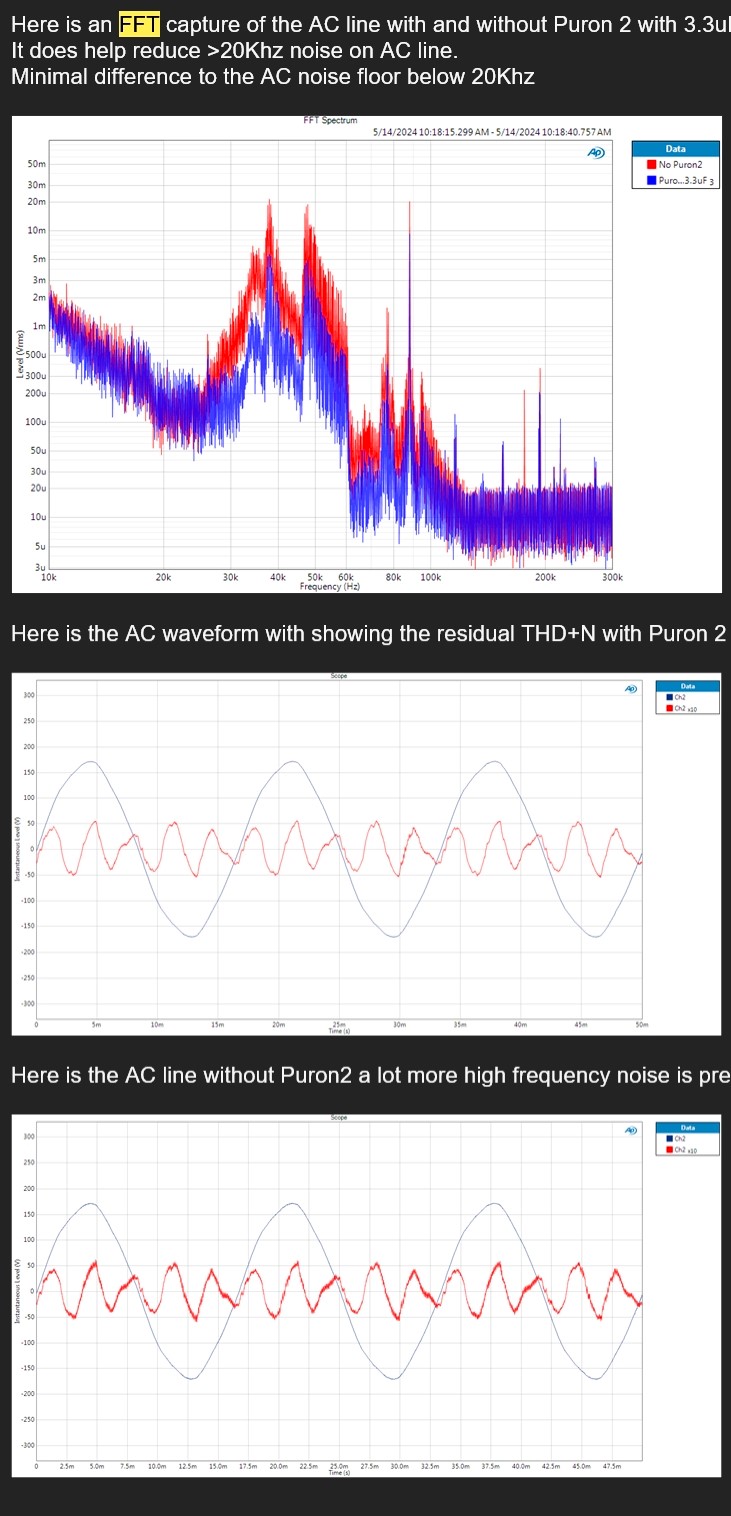
The Fast Fourier Transform graphs clearly show Main Stream's effectiveness in reducing noise. (It's identified in these preliminary tests as "Puron 2")
Main Stream's effectiveness is focused on the frequency range from 10kHz to 20kHz, but it's particularly potent in and around the critical 20kHz region, where hum, hiss, and hash tend to be most prominent. Main Stream directly takes aim at frequencies where so much of the other equipment in your home creates noise and pollutes the AC power stream—the same stream that also provides current to your audio and A/V systems. While Main Stream and SnubWay are individually focused on eliminating noise from specific, problematic frequency regions, they've also been designed to overlap their coverage, and to work in tandem to provide a complete solution for the elimination of AC mains noise. Mark is very proud of the work that's been done bringing Main Stream to the market, and Peter Madnick's Fast Fourier Transform graphs show a significant lowering of the AC noise floor before and after insertion of the Main Stream (which in the test graphs was identified as "Puron 2"). The graphs also show a significant reduction of the THD+N spectrum before and after insertion of the device into the system. As I mentioned in my evaluation of SnubWay, once it was in place, I couldn't imagine listening to my system without it, so why should the Main Stream experience be any less fulfilling?
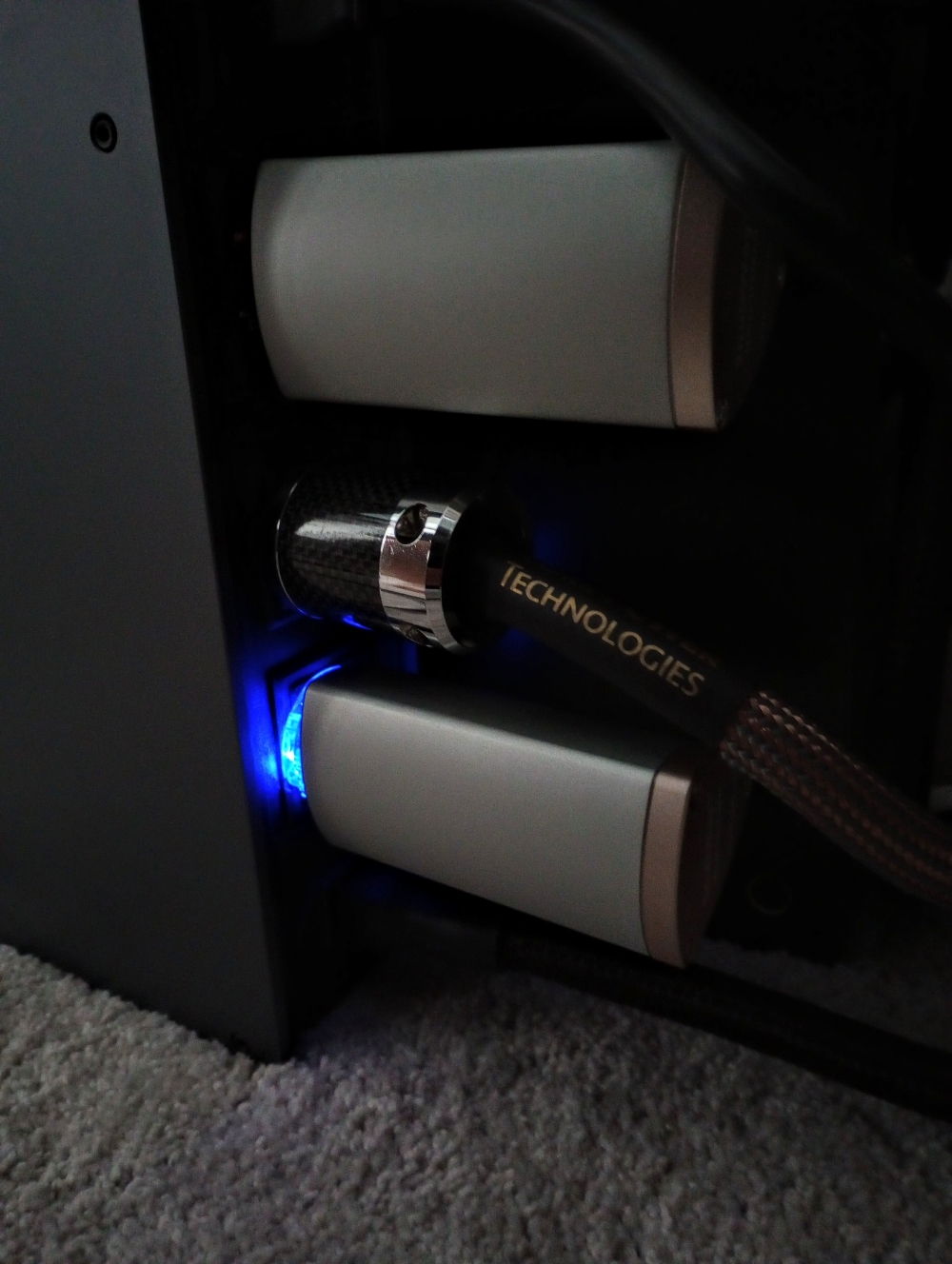
The Main Stream incorrectly positioned in the AudioQuest Niagara 1200 conditioner. Note how its blue light distinguishes it from the nearly identical SnubWay above.
Setting Up Main Stream in my Analog System
By clicking my name in the header above, you can see the components in my dual audio systems. My analog system has been revamped with a pair of standmount compact monitor loudspeakers, the Vanguard Scouts, which are in the same vein as classic British monitor designs like LS3/5A's; they run in tandem with a Vanguard Caldera 10 subwoofer. The setup also incorporates the excellent PS Audio Stellar phono preamp, and as usual, playback of LPs was handled by my ProJect Classic EVO turntable that's mounted with an Ortofon Quintet Bronze MC cartridge. The star of the analog system is my recently upgraded PrimaLuna EVO 300 tube integrated amplifier, which now features a matched quad of Sovtek 6550 power tubes and a matched pair of vintage NOS Brimar 12AU7 input tubes. The new tubes imbue the PrimaLuna amp with the kind of sumptuous analog sound I never knew it was capable of. The EVO 300 amplifier is also supercharged by Vera-Fi Audio's Swiss Digital Fuse Box—including a Graphene Sluggo—which has lifted its performance to previously unheard levels of unrestrained power and dynamics, impressive musicality, and nearly breathtaking clarity; the SDFB has lifted the PrimaLuna's performance into another universe of goodness. All equipment in the analog system is connected to an AudioQuest Niagara 1200 Low Z power conditioner that's plugged into an AudioQuest NRG Edison 15 amp duplex outlet.
Main Stream and SnubWay are fairly identical in appearance, and when placed in a dimly-lit location, the blue illuminated base plate of Main Stream easily distinguishes it from SnubWay. Especially when they were plugged alongside each other in the AudioQuest Niagara 1200; per Mark's recommendation, I plugged the Main Stream into the Niagara 1200 for a couple of days before proceeding with the evaluation. As usual in all my equipment evaluations, I also turned off the ceiling fan and the air conditioning to eliminate any unwanted ambient noise from the environment. Not having any real information available about the desired setup for Main Stream in combination with SnubWay, I proceeded in a direction that seemed logical to me, but I soon found I had questions I needed answered before proceeding with the evaluation.
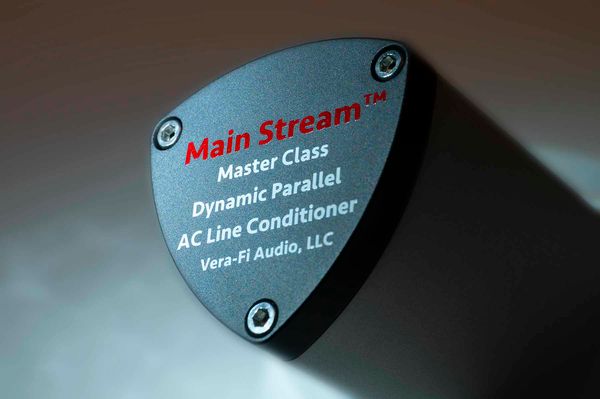
Peter Madnick Chimes In On Main Stream
The information I'd been looking for came in the form of a message Mark sent me from Peter Madnick. Where he offered his insights into Main Stream's development and implementation, and how it accomplishes its design goals:
"Main Stream is designed to improve the performance of your high-end audio or video system by reducing the amount of AC mains-based interference traveling on the wires within your home. This interference is created not only by other components in the system, but also appliances and other electrical equipment elsewhere in the house. Sometimes even emanating from outside your home!
"[AC] Line interference can cause many undesirable effects; hum, hiss, hash, or buzzing sounds from your speakers, a slight vibration that can be felt through the chassis of your components or on the motor of your turntable, and on video displays as random lines, moving bars or fuzzy images.
"Main Stream is called a "parallel" line conditioner because you do not plug your component into it, but rather plug it into the mains socket closest to the component. In this way Main Stream is never restricting the flow of current to your components, simply removing the interference it encounters on the line as the current flows by. And there is no limit to how many Main Streams you can use; a large system may best be served by several.
"Main Stream uses a combination of reactive elements to create tuned filters designed to specifically reduce the levels of noise known to interfere with your audio enjoyment. Our topology excludes the use of any type of resonant transformer as a wave shaping device, and rather only removes unwanted frequencies."
After receiving Peter's notes, I reached out to Mark to get some clarity as to where Main Stream should best be placed in my system to experience the maximum benefit. I noted that Peter had mentioned that it should be placed in the outlet adjacent to the one where the equipment was connected, and I'd had Main Stream installed in the first outlet of my AudioQuest Niagara 1200 unit, which supplies AC power to all equipment in the analog system. Mark confirmed for me that Peter was, in fact, correct, and that plugging Main Stream into the available AudioQuest NRG Edison duplex outlet socket adjacent to the one the Niagara 1200 was also connected to was the preferred location. That would provide the greatest sonic benefit, and would create a parallel configuration between the Niagara and Main Stream.
Main Stream relocated to its preferred position, plugged into the available socket of the AudioQuest Edison NRG outlet, beside the power cord of the AudioQuest Niagara 1200 conditioner.
Armed with this information, I then relocated Main Stream to the available socket of the Edison duplex outlet—the only downside with this arrangement is that it's in a fairly hard-to-get-to location that makes removing and replacing the Main Stream difficult at best. I also then moved the SnubWay down in the sequence of outlets on the Niagara 1200, moving it to the first position socket, followed by the Piggy Tail power cord that the Swiss Digital Fuse Box is connected to in the second position (the first two sockets in the Niagara are intended for connecting high current devices, like the PrimaLuna EVO 300 tube amp), followed by the power cords for the Vanguard Caldera 10 subwoofer, the PS Audio Stellar phono preamp, and the power cords for both turntables.
Since the SnubWay "snubs" the AC line by seeking and isolating RF and other noise sources, its circuitry doesn't impose any sonic signature that might interact with the Niagara unit. So the first position is perfect for it, and it "snubs" away, enhancing the purity of the AC power the Niagara is feeding to all the equipment in the stack. With Main Stream now in its preferred position, I took another extended listen to the analog system. Firstly, listening to the noise spectrum at elevated volume levels without any music signal as I'd previously done; the noise threshold was definitely less with Main Stream working in parallel with SnubWay plugged into the first outlet position of the Niagara 1200.
Listening Results
I noticed something right out of the gate with SnubWay and Main Stream now in their preferred positions: I could now increase the gain level on my PS Audio phono preamplifier to the highest setting without any increase in noise, which was never previously possible. The PS Audio unit has moving coil gain settings of 60, 66, and 72 dB, and with my Ortofon Quintet Bronze MC cartridge—that has a low output of only .3 mV—the recommended gain setting is 70 dB. That said, I've been using it with excellent results with the gain set to 66 dB, because the 72 dB setting was a bit extreme to my ears. We've been having some fairly violent electrical storms around here recently, and have lost power regularly, and whenever that happens, the PS Audio unit defaults to the factory settings and has to be manually reset. I inadvertently set the MC gain to the highest setting just prior to starting this round of the evaluation, and was astonished that the sound quality I was now getting from my phono setup was the very best I'd heard from this rig, ever! And that's part of the reason I wanted to concentrate initially on the analog system with SnubWay and Main Stream, due to the unusual level of noise I've been experiencing here in South Carolina as opposed to Georgia—especially in the analog system. SnubWay and Main Stream have tag-teamed to virtually eliminate any noise from the AC spectrum of my all analog system, which in itself is miraculous.
I had several LP reviews I was also simultaneously working on, and this evaluation made for an excellent opportunity to kill multiple birds with one stone. Among those were Impex Records' new Ellington Indigos on a pair of 45 rpm LPs; blues legend John Lee Hooker's Burning Hell from Craft Recordings' Bluesville label reboot; and Joni Mitchell's The Asylum Years (1976-1980), which features four classic albums, including Hejira and Mingus, that have all been remastered for the set by Bernie Grundman. I also relistened to the three albums in recent heavy rotation, including Patricia Barber's Nightclub and the Tsuyoshi Yamamoto Trio's Midnight Sugar (both on Impex Records) along with Stacey Kent's The Changing Lights (on Pure Pleasure Records). All of the recordings are models of perfectionist recording techniques; these vinyl pressings are all impressively quiet, and have never sounded so good in my system as they do now!
I have a number of albums by Duke Ellington in my collection, but for some unknown reason, Ellington Indigos has never been among them until now. And after having listened to this album in recent regular rotation, I'm absolutely astonished at what I've been missing all this time! That's been made even more clear to me by the brilliance of Impex's new reissue and its glorious sound, regardless of whether it's the standard black vinyl or the ultra-limited edition Purple Indigo that happens to be playing. I'm pumped to have the ultra-collectible copy; it's beautiful to behold, but even more thrilling to hear! And that's what this outstanding reissue is really all about: actually listening to a superb album of exceptional and definitive musical performances, offered in their finest ever incarnation. Each of these tracks is a masterclass by Duke Ellington and his orchestra, and every soloist presents a veritable clinic of jazz interpretation and improvisation. The performances on this album are so perfectly realized that none of the Duke Ellington LPs that are in my collection can hold a candle to Ellington Indigos. And as played across the newly revamped all analog system with both SnubWay and Main Stream in place, the backgrounds were more deathly silent, there was a more pronounced stereo spread across the soundstage, and the levels of transparency and midrange clarity were impressive, to say the least!
John Lee Hooker's Burning Hell is superb sounding album from the early days of stereo, and provides an auspicious debut for the Bluesville label reboot. The analog master tapes for this session were sixty-five years old, but this all-acoustic album has a level of quiet that's remarkable for tapes of this age! The pressing from QRP is immaculate, and showed nary a tick or pop during playback. John Lee Hooker's album catalog features predominantly electric blues; Burning Hell allows this entirely acoustic and intimate recording to stand in very stark contrast to what you'd normally expect from the master of electric guitar-based blues boogie! But the recording is a total gem, and a masterwork of late fifties recording techniques that captures him at his very best, alone in the studio with only his acoustic guitar. The excellent pressing presented an aural illusion of Hooker's voice and his guitar with a level of realism that jumped from the Vanguard Scouts, which was made even more palpable by the enhancements provided to my system by SnubWay in tandem with MainStream.
For Rhino/Warner's Joni Mitchell: The Asylum Albums (1976-1980), the LPs pressed at Optimal had surfaces that were flawless, exceptionally glossy, and free of any visible defects. These are exceptionally quiet reissues, with deathly black backgrounds and virtually nonexistent groove or surface noise. The music emerged over my newly upgraded system from almost total silence, offering a level of startling realism in my listening room, and creating a remarkable illusion of Joni Mitchell and her players in the soundfield before me. That's due in no small part to Bernie Grundman's new remasters, which are absolute wonders to hear, easily bettering any original LPs or later reissues I had on hand. I sat nearly motionless with every play of these excellent LPs, which have been in regular rotation since their arrival, and I've been totally entranced by each listening experience! Rhino's The Asylum Albums (1976-1980) offers far and away the finest incarnation of each of these records I've ever heard on any high-end system. And that improved playback is enhanced exponentially by the presence of both SnubWay and MainStream, which took an already good analog playback mechanism and inserted it into an audiophile dream environment!
I've used Impex Records' 1STEP 45 rpm LP reissue of Patricia Barber's Nightclub for countless equipment evaluations; it's an exceptionally well-recorded and natural-sounding album that I know intimately. Even though I used this album in my Digital Swiss Fuse Box follow-up, where I noted that "I immediately noticed a deeper, blacker background and an improved spatial relationship between the players, which were more well defined in the soundstage. Patricia Barber's voice possessed a more impressive level of realism and presence, such that I felt I could nearly reach out and touch her!" Those remarks, with SnubWay and Main Stream in the system, almost seem understated compared to the level of goodness I'm now hearing in the analog system. The Vanguard Scout/Caldera 10 combo plays with a much greater sense of ease, and are even more precisely controlled by the PrimaLuna amp. On the side three opener, "Autumn Leaves," bassist Marc Johnson plumbs the depths of his instrument, but the Vanguard Scouts never flinched or seemed overdriven. On Barber's version of the classic "Wild Is The Wind," her vocal is even more nuanced and delicate than ever before, emerging from a background of near-total silence. And with an additional increase in clarity and transparency that made hearing this excellent reissue from Impex now almost like hearing it for the first time.
I'd purchased a copy of Tsuyoshi Yamamoto Trio's Midnight Sugar (reissued by Impex on a pair of 45 rpm LPs) earlier this year, but in a crush of review projects, it had gotten shoved to the side, out of sight and out of mind. Having never heard this almost legendary Three Blind Mice label album before, I was literally blown away by the clarity of the sound of Impex's reissue, where the bass, piano, and drums were presented with a shocking level of realism—yeah, I know, this is another of those "audiophile" warhorses, but it's not only an album of great recordings, it's also one of exceptional performances. That emerge from completely black backgrounds, captured with such presence that you easily forget you're listening to a recording and totally get lost in the music. That's due in no small part to SnubWay in tandem with Main Stream, which were essential in creating a magnificent and supremely quiet aural environment.
Jazz vocalist Stacey Kent is an American expat who's been living and performing in the UK for years, and has been responsible for some of the most satisfying jazz vocal records of the last couple of decades. Her 2013 album The Changing Lights (Pure Pleasure Records) is a remarkable recording of standards and originals that has been in regular rotation since I first received it at the time of its release. The title song, "The Changing Lights," is a poignant song about love and loss, and the recording is a model of sheer perfection. Over the newly hot-rodded system with both SnubWay and Main Stream in place, the song (and the entire album!) emerged from the Scout/Caldera 10 combo with the kind of emotional and visceral realism that had me frozen and unable to move throughout the LP side. I love this record, but I've never experienced it like this!
Final Impressions
I know this is a review of Vera-Fi Audio's Main Stream, but almost every reference in my evaluation here has been "Main Stream in combination with SnubWay." The two units were designed to work in tandem with each other, and while my original SnubWay review found that unit to be indispensable, I now find the addition of Main Stream makes the combination of both units essential. The pair works in partnership to help your audio or A/V system experience the best possible AC power environment for the enjoyment of music and/or video reproduction.
The bottom line here is that Peter Madnick's superb design for Main Stream has worked wonders in my all-analog system. It's almost as though he and SnubWay designer Viet Nguyen were reading each other's minds! And now that everything has been properly configured in the analog system, that system plays with improved musicality, and an impressive reduction of noise was clearly evident; you can hear through more clearly to the music, and my system's imaging is more holographic. The parallel conditioning provided by the Main Stream/SnubWay/Niagara 1200 trio has led to a significant uptick in all the important metrics of the audiophile experience: there's a significant reduction of AC-related noise and RF hash, a definite drop in the overall noise floor, and this system has never sounded so musically dynamic. All the LPs I've recently listened to were more precisely rendered, and the sound of the new albums I was evaluating for review was extraordinary. I'm beyond impressed!
I've been involved in high-end audio long enough to realize that at a certain level of sound reproduction, you typically pay a lot for the most miniscule improvement. And you have to listen critically to determine whether you honestly believe the new device actually provides a level of improvement that justifies its cost. What I didn't expect at this point was to stumble onto a relationship with Mark Schifter of Vera-Fi Audio and his talented co-conspirators, Peter Madnick and Viet Nguyen! Where you get insane levels of performance at very sane price points. And as with all of Vera-Fi's product offerings, they offer a generous return policy that makes experimentation and evaluation in your own system entirely stress-free.
Thanks again to Mark Schifter for making it all possible, and to Peter Madnick and Viet Nguyen for the brilliance of their designs. The combination of Main Stream and SnubWay makes for a dynamic duo, and at this point, the tandem represents my absolute best audio product of the year! Very highly recommended!
Main Stream Master Class Dynamic Parallel AC Line Conditioner
Retail: $299 MSRP, available for a limited-time introductory offer of $235.
Vera-Fi Audio LLC
All photos courtesy of Vera-Fi Audio LLC and the author.




